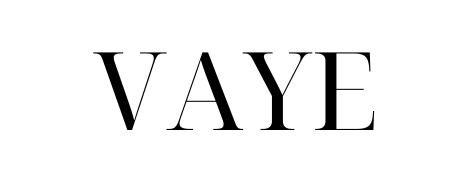
5 tips to get started with budgeting
Share
If you're reading this, you're probably looking for ways to get a better handle on your finances. Or maybe you just had that one month where you wondered, "Where did all my money go?" Don't worry, you're not alone! Fortunately, there's a simple way to get your finances in order: budgeting. And no, that doesn't mean you can never do anything fun again. Quite the opposite! It means making conscious choices so you have more time for the things that really matter.
So, grab a cup of coffee (or tea) and let's dive into five super practical tips to get started budgeting and saving. Ready? Let's go!
1. Set your financial goals
First and foremost: what do you want to achieve? Without a goal, budgeting is like taking a road trip without a destination. Exciting, but you don't know where you'll end up. Do you want to save for a vacation, a new phone, or perhaps build an emergency fund? Write down your goals and make them concrete. For example:
-
"I want to save €500 for a holiday in July."
-
"I want to set aside €1,000 for emergencies within 6 months."
With a goal, budgeting immediately becomes much more fun and meaningful. And to keep those goals clear, I recommend using a budget planner. At Vaye Amsterdam, you'll find super handy budget planners that will help you turn your financial dreams into reality.
2. Analyze your income and expenses
To know where you're going, you first need to know where you are now. Time for some detective work! Grab your bank statements and see what you're spending your money on. You'll be surprised how many small expenses (hello, coffee to go!) secretly add up.
Make a list of your fixed expenses like rent, insurance, and subscriptions. Also note your variable expenses like groceries, dining out, and those online purchases that seemed like a good idea at the time.
A handy way to keep track of your expenses is with cash envelopes . Divide your budget by category (for example, €100 for groceries, €50 for outings) and literally put that amount in an envelope. That way, you know exactly how much you have left. No envelope? No expense!
3. Create a realistic budget
Now that you know what's coming in and going out, it's time to create a budget. A commonly used method is the 50/30/20 rule:
- 50% for necessary expenses (rent, bills, groceries).
- 30% for fun things (outings, shopping, Netflix).
- 20% for savings and paying off debts.
But adjust this rule to what works for you. For example, if you have a savings goal that needs to be reached quickly, you can adjust the percentages. The most important thing is that your budget is realistic. You don't have to deprive yourself of everything, but be honest about what you can afford.
Looking for a fun challenge to make saving fun? Try the savings challenges from Vaye Amsterdam. They're creative, motivating, and will give you that extra push.
4. Use tools to track your budget
Now for the real work: tracking your budget. It might sound boring, but with the right tools, it almost becomes fun (really!). One of the most convenient ways to do this is with a budget binder . It's like an organizer for your finances. You can keep your cash envelopes, savings plans, and notes in it.
Why physically track your progress, you ask? Because it's tangible. Seeing and feeling your progress is motivating. Every time you add money to an envelope or towards a savings goal, you get that small feeling of success. Moreover, it helps you manage your money more consciously.
Another fun tool is the transparent piggy bank . It sounds simple, but being able to literally see your growing savings is a huge motivation boost. Vaye Amsterdam has several accessories that make budgeting just a little more fun.
5. Stay consistent and evaluate your progress
You now have a budget and you're off to a great start. Great! But here's the secret to successful budgeting: consistency. Make sure you review your budget regularly, for example, every week or month. Did you stick to your plan? Were there any unexpected expenses? Did you need to make any adjustments?
Evaluate your savings goals, too. How much closer have you gotten to your goal? The feeling of progress will keep you motivated. And if you notice you've had a difficult month, don't be too hard on yourself. Everyone experiences that sometimes. The most important thing is to pick yourself up again.
Tip: Use placeholders to replace large amounts in your envelopes and maintain a clear overview. Check out the placeholder sets from Vaye Amsterdam if you'd like to get started with this.
Closure
See? Budgeting isn't as complicated as it seems. With a clear goal, a little planning, and the right tools, you can achieve a lot. And the best part is: you don't have to do everything perfectly right away. It's a process of learning and adapting.
So what are you waiting for? Grab a budget planner, start small, and work towards your goals step by step. At Vaye Amsterdam, you'll find everything you need to start your budgeting journey. And before you know it, you'll look back and think, "Wow, look what I've accomplished!"
Happy budgeting!
